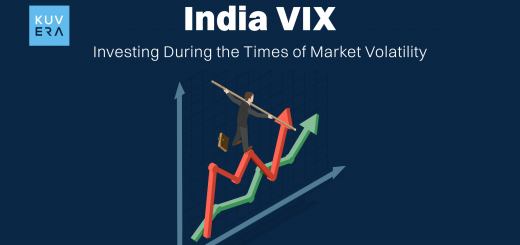Understanding the nuances of BSE and NSE is essential for any investor looking to invest in the stock market. The National Stock Exchange (NSE) is the largest in India based on market capitalisation, while the Bombay Stock Exchange (BSE) is the oldest in Asia. But both the exchanges provide a platform for buying and selling of securities.
Let’s find out more about these stock exchanges.
How Many National Stock Exchanges Are There In India?
There are 2 primary national stock exchanges in India:
1/ Bombay Stock Exchange (BSE)
2/ National Stock Exchange of India (NSE)
While there are a total of around 23 stock exchanges in India, BSE and NSE are the two main national-level stock exchanges where the majority of trading activity takes place. The rest 21 exchanges are Regional Stock Exchanges (RSEs).
What Are BSE And NSE?
The Bombay Stock Exchange (BSE) and the National Stock Exchange (NSE) are the two main stock exchanges in India. They serve as platforms where stocks and other securities are bought and sold. BSE, established in 1875, is the oldest stock exchange in Asia, while NSE was founded in 1992. It is known for its higher trading volume.
How Are BSE And NSE Similar?
Both BSE and NSE have a lot in common. Here are their similarities:
1/ They are based in Mumbai.
2/ Both BSE and NSE offer many investment options, including stocks, derivatives, futures, options, currencies, bonds, commodities, mutual funds and Exchange Traded Funds (ETFs).
3/ Both exchanges use electronic trading systems to facilitate efficient and transparent trading.
4/ They are platforms for companies to list their shares for trading. The listed companies on both exchanges must adhere to regulatory requirements and transparency standards as set by SEBI.
5/ Both exchanges are regulated by the Securities and Exchange Board of India (SEBI). This regulatory body makes sure that both NSE and BSE adhere to fair trading practices and maintain investor protection guidelines.
6/ They operate from Monday to Friday with trading hours from around 9:15 AM to 3:30 PM.
What Are The Investment Options Available On BSE And NSE?
The investments that are available on BSE and NSE are:
1/ Equities
2/ Bonds
3/ Derivatives (Futures and Options)
4/ Exchange Traded Funds (ETFs)
5/ Mutual Funds
What Are The Differences Between BSE And NSE?
Both exchanges serve important roles in India’s financial markets, with their unique features appealing to different types of investors and traders. Here are the key differences between the stock exchanges:
1/ History- BSE is the oldest stock exchange in India, established in 1875, whereas NSE is relatively newer, having been established in 1992. This historical difference contributes to BSE’s extensive legacy, while NSE represents the modern phase of electronic trading in India.
2/ Number of Listed Companies- As of 27th June 2024, BSE has 5415 companies listed, while NSE has only 2266 listed companies.
3/ Market Capitalisation and Ranking- NSE ranks as the 8th largest in the world by market capitalisation. BSE, on the other hand, is outside the top 10 rankings yet has a market capitalisation of ₹438 lakh crore.
4/ Technology- NSE introduced its automated trading system from when it started in 1992, whereas BSE adopted electronic trading with the BSE Online Trading (BOLT) system in 1995.
5/ Benchmarks- NSE’s benchmark index is the Nifty 50, comprising the top 50 companies. BSE uses the S&P BSE Sensex, which includes the top 30 companies.
6/ Offered Products- Both exchanges offer various financial products, but NSE has a distinct advantage in trading derivatives. NSE’s derivatives market, particularly in futures and options, has dominated trading volumes. It has a monopoly in the Indian stock market, with almost 100% market share in single-stock futures and options trading.
7/ Geographical Spread- NSE has a more extensive network spread across 1,500 cities while BSE is present in around 450 cities.
What Is NIFTY 50 And Sensex?
Nifty 50 and Sensex are benchmark indices for NSE and BSE, respectively. They represent the top companies listed on each exchange and are used to measure the overall market performance. Nifty 50 includes the top 50 companies, while Sensex includes the top 30.
Start investing in Index Funds.
What Is The Difference Between NIFTY 50 and Sensex?
The key difference between NIFTY 50 and Sensex is the number of companies they track. NIFTY 50 tracks the top 50 companies listed on the National Stock Exchange (NSE), while Sensex tracks the top 30 companies listed on the Bombay Stock Exchange (BSE). NIFTY 50 is considered a broader market index as it covers 24 sectors, while Sensex covers only 13 sectors of the market.
Interested in how we think about the markets?
Read more: Zen And The Art Of Investing
Watch here: Time in the market v/s timing the Market
Start investing through a platform that brings goal planning and investing to your fingertips. Visit kuvera.in to discover Direct Plans and Fixed Deposits and start investing today.
AREVUK Advisory Services Pvt Ltd | SEBI Registration No. INA200005166
DISCLAIMER: Mutual Fund investments are subject to market risks. Read all scheme related documents carefully. Registration granted by SEBI, membership of BASL (in case of IAs) and certification from NISM in no way guarantee performance of the intermediary or provide any assurance of returns to investors. Investments in securities market are subject to market risks. Read all the related documents carefully before investing. The securities quoted are for illustration only and are not recommendatory.












